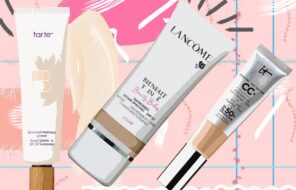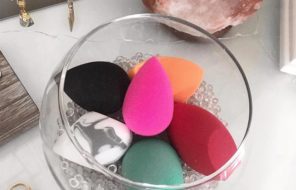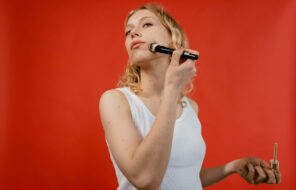Setting powder is the easiest way to ensure that your base lasts through oil, sweat, and even a dip in the pool. It’s also tricky to master, especially nowadays when the natural makeup look reigns supreme. If you apply too much, you can end up looking dry and cakey, while too little won’t properly set your foundation. This post covers 12 key tips to help you find that setting powder sweet spot for long-wearing, natural-looking makeup.
1. Choose your powder carefully
Setting powders come in all kinds of formats and finishes, so take your skin type and the foundation you use into account when making a selection. If your skin is dry, choose a silky or dewy powder to pair with a dewy or natural foundation.
For oily skin, a matte finish powder is ideal, but you can also choose a powder with a natural finish if your foundation is already mattifying. If you love how your current foundation looks on your skin, go for a natural setting powder that won’t alter the finish.
2. Prep, prep, prep
It can be challenging to achieve a smooth canvas when the skin underneath is dehydrated or covered in dead skin buildup. Doing a bit of skincare prep will hydrate your skin and smooth down dead skin cells. This can prevent dry patches while helping your base stay in place for longer.
On a daily basis, follow a consistent skincare routine that’s suitable for your skin type. Right before doing your makeup, focus on building layers of hydration with essences, serums, and moisturizers. A quick mechanical exfoliation might also help if your skin can tolerate it. Finally, if you’re doing your makeup in the daytime, don’t forget to apply face sunscreen.
3. Keep your foundation light
The ultimate hack to achieving long-lasting makeup that won’t cake up and turn patchy is to keep your cream and liquid layers as thin as possible. This way, you won’t need as much powder to set your foundation and concealer.
To get the right level of coverage, take your time. Start with a small amount of foundation, and if you want more coverage, build it up gradually with thin layers.
4. Choose a fluffy brush
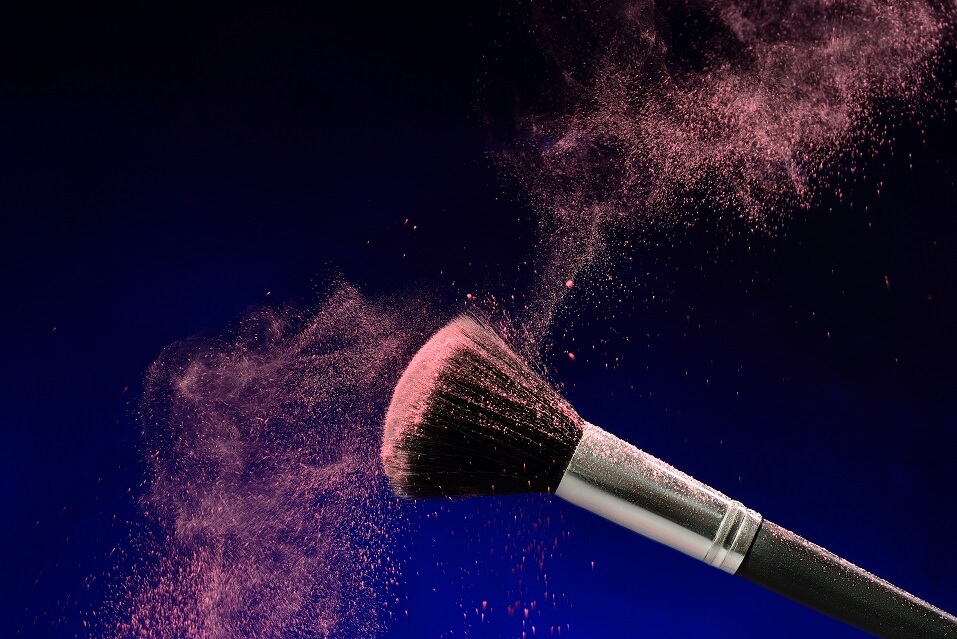
A soft, fluffy makeup brush is the best tool for ensuring your powder goes on in a very light, non-cakey layer. The fluffier, the better because it’ll distribute your powder in a diffused manner. A dense brush, on the other hand, will pack on the powder more heavily, which isn’t useful when aiming for a natural look.
5. Use small brushes for targeted areas
When you need to powder your undereye area or an angry spot, a small brush will give you more control. Again, a softer brush will provide a thinner layer of powder, while a dense brush will pack on a lot. If you have spots that are oilier or your makeup fades quickly, opt for a firm brush that’ll apply more powder in a controlled manner.
6. Dip, tap, and wipe your brush before applying
Don’t apply your powder immediately after loading your brush. Instead, dip your brush into the container, then tap it at the ferrule (the metal ring under the brush head) to remove excess powder. Finally, swirl your brush on a clean surface like a paper towel or empty lid, pushing some of the powder deeper into the bristles and leaving you with the perfect amount to set your makeup softly.
7. Never drag, always tap during application
The next rule of setting is to tap or press your brush over your skin instead of dragging it. By tapping the brush again and again, you ensure a seamless and even layer of powder. Dragging the brush can disturb your foundation and cause uneven streaks.
After you finish powdering, you can always add a little more if you think it’s necessary. It’s easy to powder more, but fixing an over-application is tricky, so apply slowly.
8. Brush off the excess
Did you accidentally overapply? It happens to the best of us. One quick fix is to wipe off your fluffy powder brush and then use it to brush away the excess powder using downward or circular motions.
9. Try powdering first
Using powder as a primer won’t work for everyone, but it’s a game changer for some. This technique creates an oil-absorbing barrier that’s ideal if your skin is oily or your morning skincare products are very creamy. It’s sometimes referred to as the Wayne Goss method after the makeup artist who popularized it.
Make sure to apply the powder lightly (again, a fluffy brush is your friend) before applying your foundation. Since the powder goes below the foundation, it doesn’t change the finish dramatically. If your skin is very oily, add another thin layer of powder once you’re done with cream complexion products.
10. Reconsider “baking”
Baking is a technique of using a makeup sponge or puff to apply a thick layer of setting powder, usually to set concealer under the eyes. The powder sits for a few minutes, and then you use a fluffy brush to sweep away the excess. It gives a long-wearing, porcelain finish that was very popular in the mid-2010s. However, if you prefer the natural “no makeup” makeup look that’s trendy these days, we suggest you save baking for the stage.
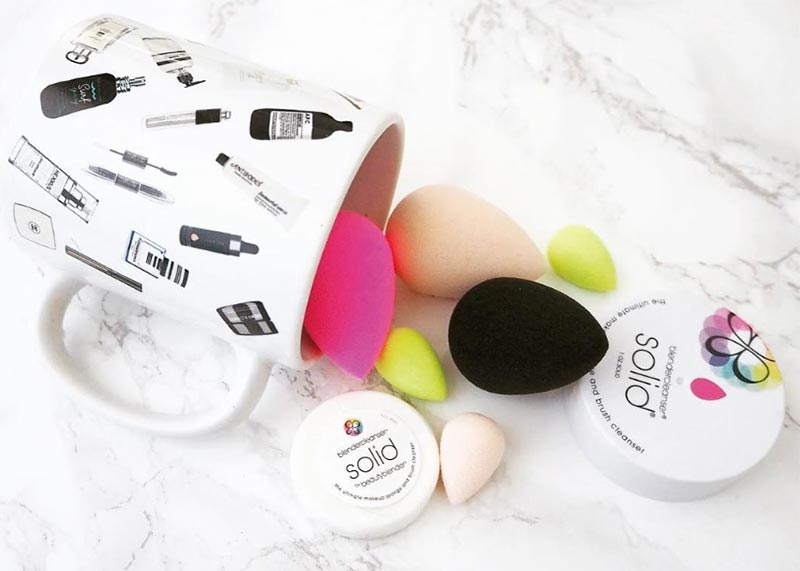
That said, it doesn’t mean you can’t use your Beauty Blender to set your foundation at all. Just do so with caution. Instead of loading your sponge up with a ton of powder, try that same dip, tap, and wipe method we suggest when using a brush. You’ll end up with a bit more coverage than if you used a brush, but not to an extreme level.
11. Mist to hydrate
Once you finish your complexion makeup, give yourself a quick look in the mirror. If your skin still looks a little dry or your powder hasn’t fully melded into your foundation, a hydrating mist like MAC Fix+ or E.l.f. Soothing Aloe Facial Mist will perk things right up. A quick facial misting will infuse your makeup with moisture, helping with longevity by fusing the layers of cream and powder.
12. Use a setting spray for longevity
If you want to extend your look without using more setting powder, setting spray is a must. Setting sprays are made with polymers that create a makeup-locking film over the face to keep you looking fresh all day long. The biggest bonus is that they don’t change the finish of your makeup quite as intensely as setting powders.
Set for success
If we have to summarize, our 12 tips for using setting powder boil down to this: Use less and apply with precision. Setting powders extend your look precisely because just a small amount can do so much. With that in mind, you can even develop your own setting powder hacks customized to your makeup routine.


